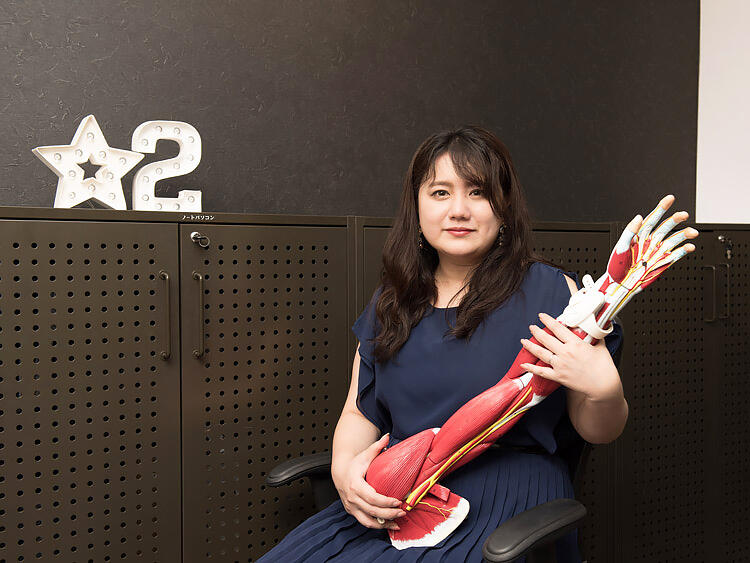
The world is watching a Japanese inventor ― Emi Tamaki. She got the world's attention with "BodySharing," a technology to share not only audiovisual senses but also various other senses such as weight and resistance with other people and robots. She is the first female professor in the Faculty of Engineering at the University of the Ryukyus and CEO of the venture company H2L inc. (Minato-ku, Tokyo). BodySharing was born out of her desire to increase life experiences by sharing senses.
Focusing on the proprioceptive senses felt by muscles and tendons
Whenever you experience something fun, you want to share the experience with someone close. In such cases, you take photos or videos and send them to the recipients, who enjoy playing them on their smartphones or computers. This sharing of visual and auditory experiences has become a part of our daily lives with the spread of smartphones.
This series of communication comprises the input and output of information. The sender uses input devices like cameras, microphones, and keyboards to create information that appeals to the visual and auditory senses. The receiver receives it in the form of images and sounds using output devices such as displays and speakers.
However, with sharing experiences through audiovisual senses, you feel that you share the experience passively rather than actively experiencing it. Tamaki then focused on the "proprioceptive senses (deep senses)" felt deep inside the skin, wondering if people could share senses other than audiovisual.
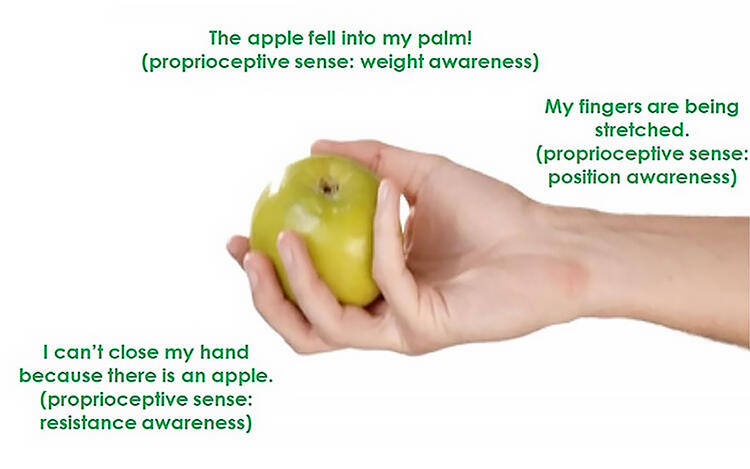
(Original image was provided by Tamaki and has been translated by JST)
The proprioceptive sense means an awareness sense: For example, you stretch out your arm and fingers when catching a falling apple, feel unable to close your fingers around the apple because it is in your palm, or feel the weight of the apple in your palm. Tamaki thought it would be possible to share senses that were active and full of realism as if she had experienced them if she could measure proprioceptive sense with sensors and transmit them to others through some kind of output device.
"Possessed Hand," an output device, and "Unlimited Hand," an input/output device
The problem was that there were neither input devices to measure proprioceptive senses nor output devices to transmit them. Then the first thing Tamaki did was invent the "Possessed Hand," which uses electrical stimulation to move human hands, and she announced it in 2011.
Tamaki explains, "For example, when we try to move our fingers, our brain emits an imperceptible electrical signal. The signal travels through our nerves and elasticizes muscles to move our fingers. When a computer sends an electrical stimulus similar to this signal and stimulates a specific part of the skin in the forearm, our fingers move without trying to move them. I used this mechanism to create the Possessed Hand."
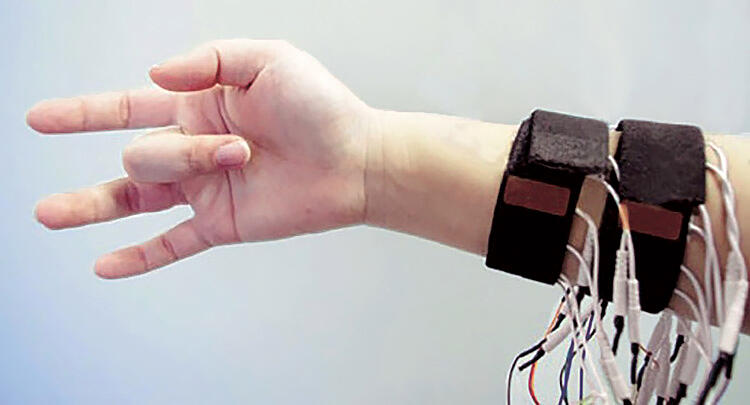
(Provided by Tamaki)
The realization of the proprioceptive sense sharing attracted much attention due to its novelty. In 2011, this ingenious Possessed Hand was selected as one of "the 50 Best Inventions" by the U.S. "TIME" magazine, and Tamaki founded H2L in 2012.
Following the Possessed Hand, an output-only device, Tamaki developed the "Unlimited Hand," which also has a sensor (input device) function to measure muscle movements when the wearer moves their fingers; she announced this in 2015. The Unlimited Hand has been used by many people for research and product development, because of its specifications for unlimited use, from medical treatment to entertainment, simply by developing software.
"When you shine a special light on the bulging muscle underneath the skin, it reflects more light than when it is not bulging. What's unique about this technology is that I focused on this phenomenon. I was able to indicate how many grams of force the hand is pressing with, leading to the success in measuring proprioceptive senses," says Tamaki.
The Unlimited Hand can transmit proprioceptive senses to other people, robots, and virtual-world characters by outputting the obtained data as electrical signals. For example, you can share the weight of a flying-bird landing on your hand, the sense of a bird's talons scratching you, etc. Tamaki named this sharing system of proprioceptive senses "Bodysharing."
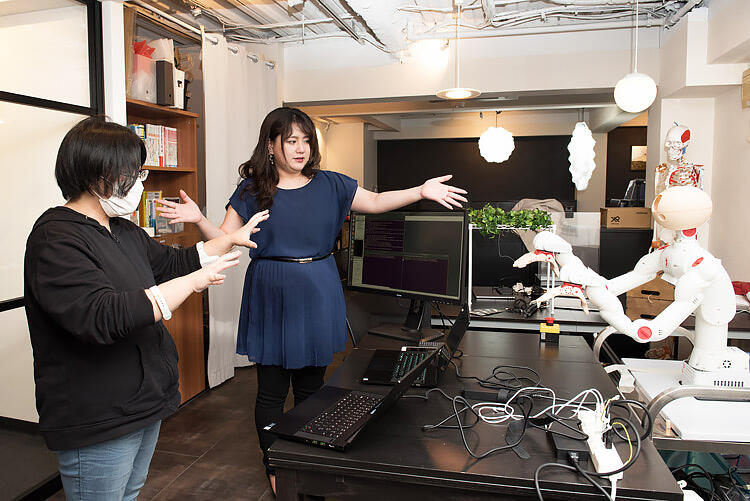
Sharing the proprioceptive senses was a "missing piece"
Tamaki's thoughts on sharing experiences arose when hospitalized several times between high school and college. Being in a large room with other long-term hospitalized patients, she got to know and talk with people of all ages. It was a fun time, and it seemed like they were enjoying one another's company, but they all had an ardent desire in common.
"When you're hospitalized for a long time, you often miss opportunities for life experiences. As a student at the University of the Ryukyus, I could not experience things like joining a club, barbecues, etc. One person told us that she couldn't go to her child's sport's day, while another expressed how sad she was because she couldn't celebrate her grandchildren's birthday close to them. By speaking up and sharing what we had experienced, we were able to deal with the loneliness of not being able to experience things," Tamaki describes what happened back then. "I realized there that experience sharing is vital in life, and I started my research, hoping for more chances of sharing experiences, and hoping to create a system that would allow people to have many experiences, even when they have difficulty going out."
Initially, she thought about a robot experiencing something in her place, so she went to graduate school at Tsukuba University, which is active in robotics research. "But having seen that there were many robot researchers, I changed my mind, like, 'Oh, I don't need to do it.' (laughs) So, I considered what I should do to achieve the ultimate goal of increasing the quantity and quality of experience sharing. Then I realized the areas where no one else was doing work and was left out entirely, the so-to-speak missing piece, was the sharing of proprioceptive senses." To pioneer a new field, she also strived to study not only engineering fields such as circuit design, programming, and machine learning, but also physiology, materials science, and psychology, fields outside of her expertise. This physiology and psychology are well used in the sharing of proprioceptive senses.
People can immerse themselves in the shared world with more realistic conditions by sharing proprioceptive senses. This has considerable meaning in industrial aspects. H2L now makes its presence felt in the applications of BodySharing, not just in the development and selling of products.
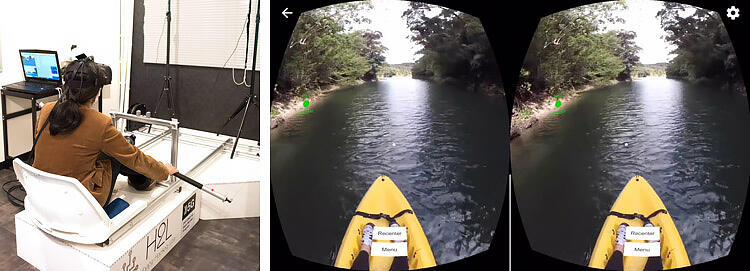
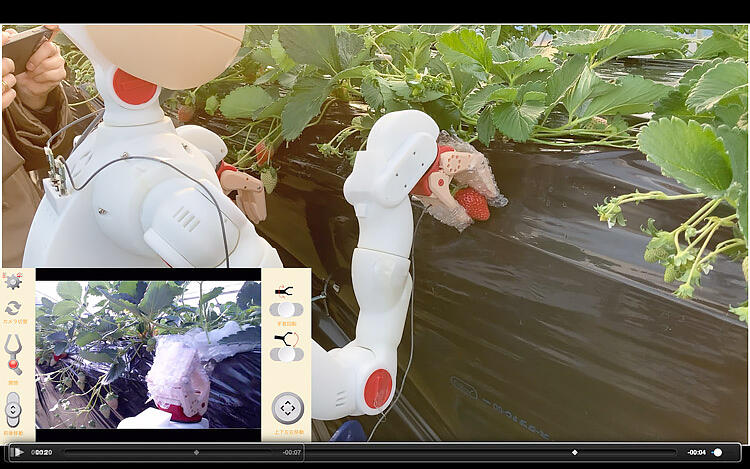
Wanting people to take being a minority positively
However, there are few women in the engineering area, especially information-related fields. She had some difficulties that only a woman could have faced. For example, when talking to outsiders together with male students or researchers, there were times when she felt frustrated with not being included in discussions because they thought that women never designed circuits. Nevertheless, Tamaki takes it this way:
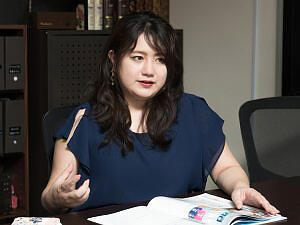
"Female students were indeed the minority. However, as diversification increases as it does now, everyone could become a minority at some point. Therefore, I want people to take being a minority positively as something interesting to overcome, and never forget what you felt when you were a minority. Thinking of the sense of responsibilities and hardship of the people in their 50s to 70s who have pioneered women's social advancement, we are in a better time."
Being a minority is a point of individuality. Tomohisa Wada, Dean, Faculty of Engineering, the University of the Ryukyus, expects Tamaki's individuality to revitalize the entire university.
He says, "Just like the diversity that the SDGs call for, universities need a lot of personalities. It would be nice if a wide variety of individualities, including those who take on the challenge of creating inventions that would connect with society, like Tamaki, gather in those who pursue a single field to build theories, leading to the revitalization of universities and local communities."
Fulfillment of Life and Cultural Maturity
Tamaki envisions a future society where everyone can gain three times as much experience as people living today through experience sharing. Why does she think so much of experience?
"I believe that knowledge alone is not enough for humans. When experiences are mixed with knowledge to become wisdom, we feel alive. People have formed culture by passing on their wisdom to the next generation. Therefore, I'm aiming for the fulfillment of individual life and cultural maturity by increasing the amount of experience people get."
As experience increases, wisdom will increase, creating new ideas to change society. Indeed, inventions make the future. We wonder what kind of technologies and applications she will announce to realize the future society she aims for. We can't take our eyes off what she does.
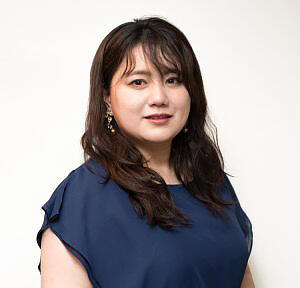
TAMAKI Emi
Professor, Faculty of Engineering, University of the Ryukyus / The founder of H2L inc.
Born in Okinawa Prefecture, Japan, she completed her doctorate at the University of Tokyo's Graduate School of Interdisciplinary Information Studies in 2012. After working as an intern at Disney Research in the U.S. and as an associate professor at the School of Human Sciences, Waseda University, etc., she assumed her current position in 2021. Since 2015, she has been a member of scientific research and development-related committees for the Cabinet Office and the Ministry of Economy, Trade and Industry. Researcher of JST's PRESTO program in the same year.
Original article was provided by the Science Portal and has been translated by Science Japan.




